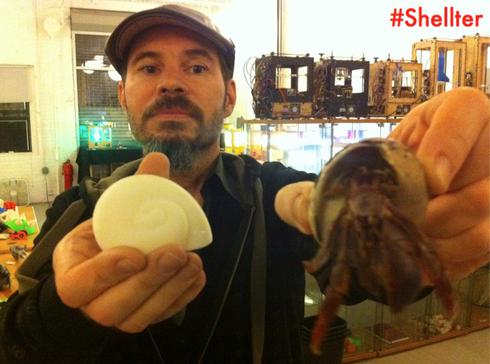Where does 3D printing and species protection intersect? Hermit crabs, apparently. Makerbot Industries, who make do-it-yourself 3D printers, launched Project Shellter
last Tuesday. Project Shellter intends to leverage the Makerbot
community's design talent and network of 5,000 3D printers to design and
produce shells for hermit crabs who face a species threatening,
man-made housing shortage. Hmm, sounds familiar.
Bre Pettis, a founder of Makerbot, explains on the Makerbot blog:
Hermit crabs don’t make their own shells. They scavenge
their homes. And now, hermit crabs are facing a housing shortage as the
worldwide shell supply is decreasing. With a shell shortage, hermit
crabs around the world are being forced to stick their butts into
bottles, shotgun shells, and anything else they can find. This is not
acceptable. As a community, we can reach out to this vulnerable species
and offer our digital design skills and 3D printing capabilities and
give hermit crabs another option: 3D printed shells.
One of the challenges is that no one knows yet if hermit crabs will
live in man-made plastic shells. And if they will, what shell designs
would make the best hermit crab homes. Makerbot is setting up a hermit
crab habitat in their factory to test shell designs shared by the
community.
This is an ingenious crowdsourced intervention, and I encourage you to check it out (follow the #SHELLTER
tag Twitter). But, a thought - how about we stop destroying hermit crab
homes in the first place? Isn't putting too much plastic stuff in the
ocean part of the problem?
UPDATE 10/25:
Some clarification from the Makerbot folks brought up from comments below:
-
The final shell material has yet to be determined; plastic is being used for prototypes
-
No printed shells have been distributed in the wild
-
The goal is to create a printable hermit crab shell for domestic (aquariums) use thus reducing harvesting of natural shells

